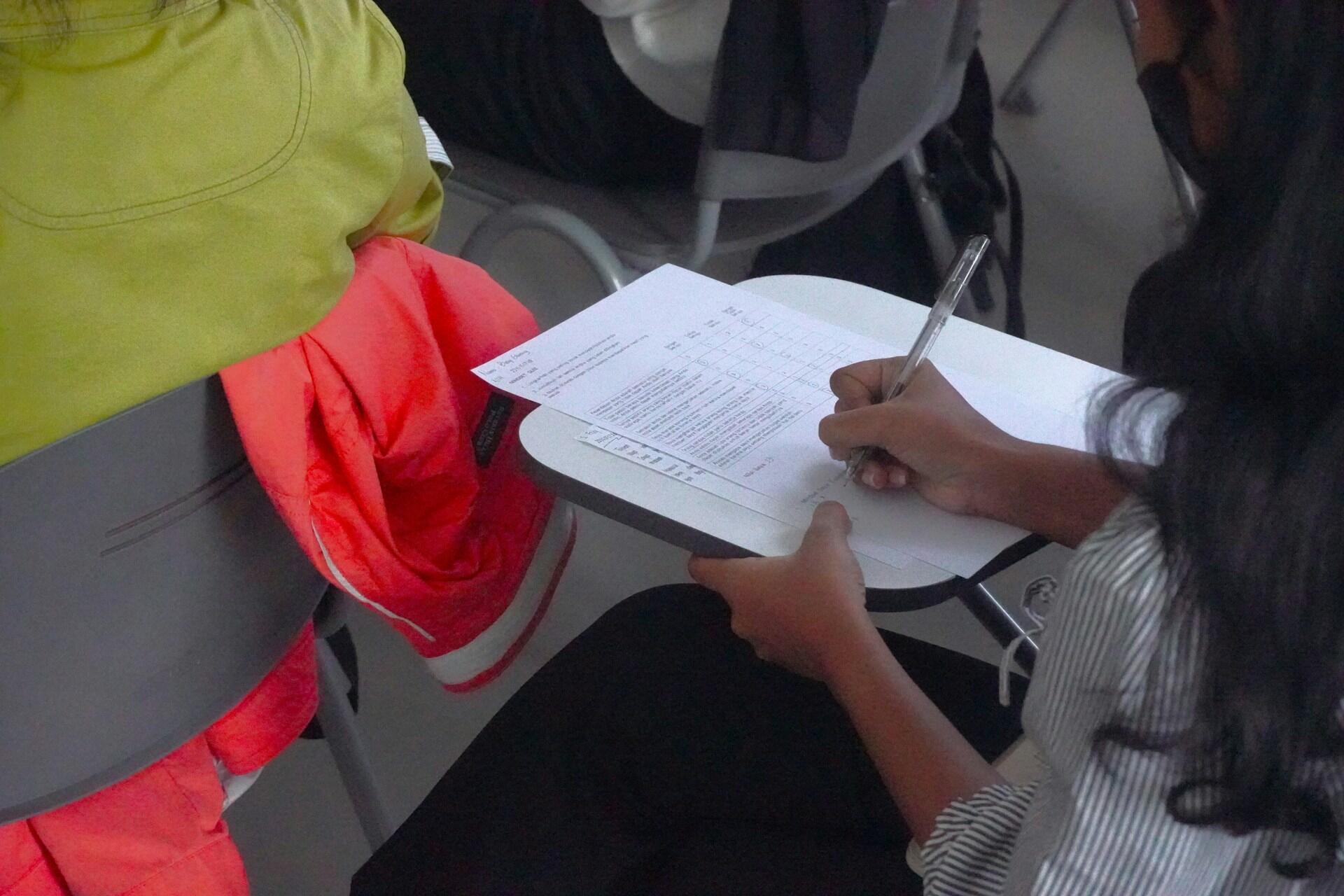What's the real difference between Cambridge and NCEA? Which pathway is better suited for attending university in New Zealand or abroad? NCEA is the national qualification framework built around standards and credits. At the same time, Cambridge (which includes IGCSE, AS Levels, and A Levels) follows an internationally standardised, exam-based curriculum. Let's compare the two systems in terms of structure, assessment, and recognition, so families and students can choose the right pathway for their strengths, learning style, and study plans.

What Is NCEA?
The National Certificate of Educational Achievement (NCEA) is New Zealand's main secondary school qualification. Almost every school in the country offers it, and for most students, it's the default pathway in Years 11 to 13. The system is built around earning credits through a mix of internal assessments and external exams. Three progressive levels tend to correspond to Year 11 (Level 1), Year 12 (Level 2), and Year 13 (Level 3).

NCEA is structured around Achievement Standards and Unit Standards. A standard is worth a number of credits, and students can achieve these standards at different grades:
- Not Achieved
- Merit
- Excellence
NCEA allows students to earn credits from both internal assessments and external exams. They can even mix subjects from different levels in the same year, balancing vocational and academic pathways.
To be awarded a full NCEA certificate at each level, students must meet the required number of credits, as well as the literacy and numeracy co-requisites. Since NCEA is standards-based, it allows for considerable flexibility. Students can mix their subjects from different levels in the same year, taking vocationally focused courses or academically rigorous subjects for university entrance.
What Is Cambridge (IGCSE, AS & A Levels)?
The Cambridge International curriculum is globally recognised and is offered in a growing number of New Zealand schools. It's administered by Cambridge Assessment International Education (CAIE) and provides a structured pathway that prepares students for further study in New Zealand and beyond.
Students typically begin the Cambridge Pathway with the IGCSE (International General Certificate of Secondary Education) in Years 10 and 11. This qualification provides students with a strong academic foundation across core subjects, including English, mathematics, and science, while also offering them the choice to study arts, humanities, and languages.

Upon completing IGCSE, students move on to AS Levels and A Levels. These are typically studied in Years 12 and 13. Students choose three or four subjects and study them in depth before completing exam-based assessments in their choices. AS Levels and A Levels are graded with letters from A (with an A* available at A Level) to E. These qualifications are recognised by all New Zealand universities as well as thousands of institutions around the world.
Cambridge is a good option for families who like its international recognition, clear subject structure, and deeper focus on specific subjects. Students looking to study overseas or those who do better in exams often prefer Cambridge over NCEA.
Curriculum Design: Credits vs Subjects
When it comes to NCEA vs Cambridge, your choice may be made by how the two systems are structured. The key question is whether a student prefers flexible, credit-based assessment (NCEA) or specialised, exam-focused courses (Cambridge). Let's see the two compared.
NCEA Curriculum Design
- Based on credits earned through Achievement and Unit Standards.
- Flexible. Students can take a mix of subjects across different levels in the same year.
- Combines internal assessments (projects, essays, tests) with external exams.
- Recognises achievement at four grades: Not Achieved, Achieved, Merit, Excellence.
- Designed to support a wide range of pathways, from vocational to university study.
Cambridge Curriculum Design
- Based on full subjects studied over one or two years.
- IGCSE in Years 10–11 gives broad academic grounding.
- AS and A Levels in Years 12–13 allow specialisation in 3–4 subjects.
- Assessed mainly through final exams set and marked internationally by CAIE.
- Provides a consistent, globally benchmarked qualification widely recognised by universities.
of New Zealand high schools now offer Cambridge qualifications (IGCSE/AS/A‑Levels) as an alternative to NCEA
Assessment and Grading
Assessments and grading are different between NCEA and Cambridge. For students and families, NCEA rewards consistent effort throughout the year, while Cambridge assesses mastery of content in final assessments. The choice could come down to how the student prefers to study.
NCEA uses its standards-based system. Each standard is worth a set number of credits, and the results are graded as Not Achieved, Achieved, or Excellence. Internal assessments are moderated by NZQA, with the end-of-year exams using an international marking system. A student's final certificate is awarded when they have the required number of credits at that level.

Cambridge is more exam-based, with students sitting international examinations at the end of the course. These usually take place in November in New Zealand, with grades awarded on a letter or numbered scale for IGCSE (A-G) or (1-9) or a lettered system for AS Level (A-E) and A Level (A*-E). The results are standardised internationally, which gives universities a clear benchmark for entry decisions. There's little flexibility within a course, and performance is largely determined by how the student performs on their final exams.
NCEA: Modular and flexible, combining coursework and exams, with four achievement levels from Achieved to Excellence.
Cambridge: Predominantly exam-based, with letter grades that are internationally benchmarked.

University Entrance Requirements
NCEA and Cambridge offer recognised pathways into New Zealand's eight universities. However, the requirements look quite different due to the differing structures and grading of each system. Both systems are designed to ensure students are ready for university, but NCEA measures accumulated credits. At the same time, Cambridge focuses on the final exams we saw earlier.
NCEA University Entrance (UE)
- Achieve NCEA Level 3.
- Gain 14 credits in three approved subjects.
- Meet UE Literacy (10 credits at Level 2 or above: 5 reading, 5 writing).
- Meet UE Numeracy (10 credits at Level 1 or above).
Cambridge University Entrance (UE)
- At least 120 points on the New Zealand Cambridge Tariff.
- A minimum of grade D or better in at least three subjects from different syllabus groups (excludes Thinking Skills).
- Literacy: Grade E or better in AS English Language, Language & Literature, or Literature in English.
- Numeracy: Grade D or better in IGCSE Mathematics, or a pass in AS/A Level Mathematics.
NZ University Entrance Requirements Compared
| Requirement | NCEA | Cambridge |
|---|---|---|
| Qualification level | NCEA Level 3 | A Level (with AS contributing) |
| Subject requirements | 14 credits in 3 approved subjects | 3 subjects at grade D or better across different syllabus groups |
| Literacy | 10 credits (5 reading, 5 writing at L2+) | AS English (Grade E or better) |
| Numeracy | 10 credits at Level 1+ | IGCSE Maths (Grade D+) or AS/A Level Maths pass |
| Points system | Credits | NZ Cambridge Tariff (120 points minimum) |
Recognition in New Zealand and Internationally
Recognition by universities is one of the most important factors when choosing between Cambridge and NCEA. For students aiming to study abroad, Cambridge can offer an advantage as it's more internationally consistent. However, NCEA is the default system in New Zealand and provides more flexibility for local university admission.
Cambridge qualifications (IGCSE, AS, and A Levels) are recognised by all NZ universities and over 1,400 institutions worldwide, including top universities in the US, UK, Canada, Australia, and Asia.
NCEA is automatically accepted by all eight New Zealand universities as well as tertiary institutions. A wide range of international universities also accept NCEA, though requirements can vary by country. In some cases, institutions may ask for course details or a conversion.
Cambridge qualifications are highly respected and accepted by all eight New Zealand universities, too. Cambridge is recognised in over 160 countries and accepted by more than 1,400 universities, including top universities in the US, the UK, Canada, Australia, and Asia, much like the International Baccalaureate. Since Cambridge grades are internationally benchmarked, admissions can easily compare Cambridge results with their own local systems.
around the world.
Workload and Learning Style
Students have vastly different experiences between studying NCEA and Cambridge. The choice to pick one over the other depends on the student's individual learning style. Some love the idea of diving into a limited number of subjects. In contrast, others may prefer NCEA's modular and credit-based curriculum.
NCEA distributes the workload throughout the year through internal assessments and end-of-year exams. Students who work steadily throughout the year will do well and won't have the pressures of a single final exam to worry about. However, it does mean they have to manage multiple deadlines simultaneously, and their academic performance must be consistent.
Cambridge places most of its weight on the final examinations. With the workload being more exam-focused, it allows students to perform well on the day, even if they weren't consistently studying throughout the year (though constant study is still highly recommended).
We’re seeing strong growth in demand for Cambridge across NZ schools, For many families, it’s not about rejecting the New Zealand curriculum - it’s about seeking a system that better prepares their children for international opportunities.
Nathan Villars, Chair of the Association of Cambridge Schools NZ and Principal of ACG Sunderland
Costs, Access, and School Options
The cost and availability will ultimately make the decision for most family. Cambridge is well-established and continues to grow in Auckland and other major centres, although it is less available in regional areas. Confirm that a nearby school is registered as a Cambridge centre first.

NCEA
- Funded by the New Zealand government.
- Offered in nearly every secondary school across the country.
- No exam fees for domestic students.
- Results are automatically used for local university entry.
- Most accessible pathway for families nationwide.
Cambridge
- Offered in a smaller but growing number of NZ schools (often independent or high-decile).
- Administered by CAIE, with fees charged per exam entry.
- Typical costs range from NZ$150–200 per subject.
- More widely available in Auckland and larger centres than in regional areas.
- Private candidates may enter exams through registered centres if their school does not offer Cambridge.
Is Cambridge Harder Than NCEA?
So is Cambridge harder than NCEA? Ultimately, it's the learner's strengths and learning style that will dictate what they find more challenging. Cambridge can feel "harder" due to the depth and final exams. However, students may struggle with the ongoing pressures of NCEA, especially if they start to fall behind.











